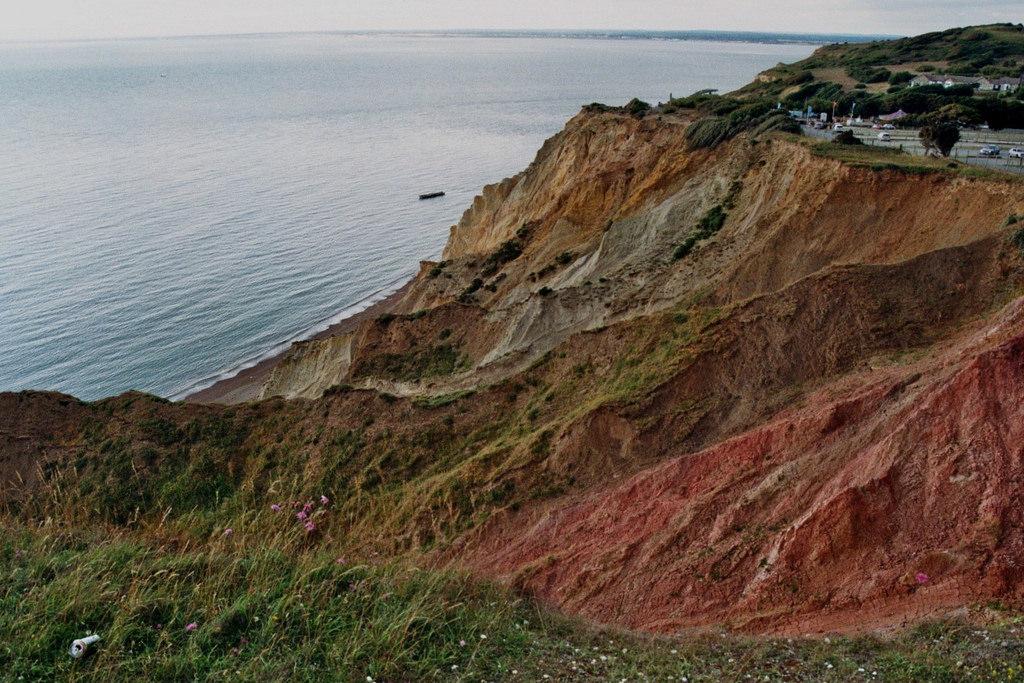Scientists dig in to paleosoil to find out why some civilizations learned to farm earlier
The site that interests Allaby and his team of reseachers is just off the coast of the Isle of Wight in the Solent estuary. It’s where archaeologists found a 5,000-year-old boat-building yard.
A recent discovery of ancient wheat DNA in ocean sediments off the British coast suggests that grain arrived there thousands of years before people actually began to farm. That discovery has archaeologists rethinking their theories about the rise of agriculture in western Europe.
The global history of agriculture is well established: It was first developed in the fertile crescent, the part of the Middle East that curves from the Persian Gulf across modern Israel and Syria into Egypt. From there it gradually spread across Asia and Europe, reaching Britain about 6,000 years ago.
Divers found traces of wheat DNA in 8,000-year-old paleosoil, about 11 meters under the sea off the coast of Britain. That area represents the land that existed during a time when sea levels were rising. The researchers used a new approach to collect environmental DNA — that is, DNA that’s found free and living in sediment. Robin Allaby says the cool temperatures of ocean make it great for preserving environmental DNA.
“It's a constant four degrees down there, and the preservation was incredible. So it's like nature's fridge,” he said.
The discovery sheds new light on the development of ancient agriculture. Researchers who wondered why residents of modern day Britian were so slow to adopt agriculture had long believed it was because they were on an island, physically removed from the mainland and its agricultural knowledge.
But the wheat DNA at this new site — Bouldnor Cliff, just off the coast of the Isle of Wight in the Solent estuary — proves that Britain was in fact culturally connected with continential Europe.
The wheat DNA comes from contact with communities in the south of France. So the local communities had been exposed to agriculture — even if they weren't pursuing it themselves. Scientists argue two possibilities for the delayed development of agriculture in Britain: Either they didn't want to or they couldn't.
The first theory is that health risks discouraged transitioning to farming. Many diseases are associated with farming, as people started living in close proximity to lots of animals. In additiona, without physical adaptations, switching from the high protein diet of a hunter-gatherer to a high starch diet brought malnutrition. A crash in health and population could’ve turned people away from farming, instead staying with the higher calorie hunter-gatherer lifestyle.
The latter theory suggests farming could not progress that far north because agricultural plants, like wheat, could not adapt to growing at such northern latitudes.
Allaby says population growth, and limited resources, may have eventually pushed people to farm. Hunter-gatherers require more land than farmers, and as populations grew, people turned to agriculture as a more efficient means of finding food, the health risks notwithstanding. An agricultural economy might be comparatively more sedentary and less healthy, but it can outcompete a hunter-gatherer economy.
“If you've only got a small amount of space — you have to go to an agricultural economy,” Allaby says. “It may well have been the case that the Mesolithic peoples of Europe really did not want to switch to an agricultural economy, but at some point they would have had to switch as their own hunter-gatherer economy would have ceased to be viable as they lose more land to this encroaching advancement of arable agriculture.”
This story is based on an interview from PRI's Living on Earth with Steve Curwood
